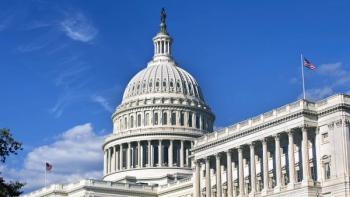
The Consolidated Appropriations Act for 2023 provides FDA with a $6.6 billion total budget.

Jill Wechsler is BioPharm International's Washington Editor, jillwechsler7@gmail.com.

The Consolidated Appropriations Act for 2023 provides FDA with a $6.6 billion total budget.

FDA struggles to track shortages caused by a rise in demand.

Health crises, political tension, and budget concerns were major challenges.

The results of the mid-term election may reduce Congress’ ability to pass FDA-related legislation during its lame duck session.

A possible change in leadership on Capitol Hill has aggravated fears of political push-back on FDA regulation and approval of contraceptives and other medications.

FDA keeps its user fees but fails to gain important reforms.

An advisory committee’s vote to remove Makena from the market illustrates how difficult it is for regulators to ensure that such drugs document safety and effectiveness in a timely manner.

CBER maps modernization plan to handle surge in research and applications.

FDA backs joint reviews, common research policies, and modern production methods around the world.

FDA is highlighting how the Patient-Focused Drug Development program has encouraged active involvement of many patient groups in bringing their perspectives into the process of developing, testing, and approving new medicines.

Legislative leaders are looking to approve a bare-bones measure to fund FDA operations as part of a short-term government funding bill.

Regulatory officials are addressing challenges in ensuring that clinical data can be relied on in making regulatory decisions.

The White House hopes to expand US modern biotech manufacturing and reduce reliance on foreign sources of bioindustrial materials.

FDA is in jeopardy of losing its fees for assessing and approving new drugs and medical products.

Pharma loses battle to block price negotiations, but implementation faces many challenges.

Democrats approve curbs for Medicare plans, but not for commercial drug coverage.

Better clinical data are needed, as well as strategies for tackling opioid abuse, tobacco use, and food safety.

FDA’s hybrid inspection model will remain a regular means for supplementing onsite inspections and will be further integrated into the agency’s oversight operations.

FDA and the USPTO hope to promote competition by challenging strategies designed to block timely approval of generics and biosimilars.

Scrutiny of accelerated approvals has generated a range of reform proposals to accelerate the conduct of confirmatory studies.

US legislators are devising strategies ahead of the reauthorization deadline for the FDA User Fee legislation.

Application for OTC contraceptive highlights efforts to broaden access to medicines.

Some states look to block access to approved drugs.

Agency leaders are moving to develop a rating system to identify those drug manufacturers with more dependable production operations.

Regulators wish to expand and clarify methods for obtaining information on medicines used by or needed for pregnant and lactating individuals through clinical trials and postapproval studies.

FDA is at a pivotal moment because of important gains in medical treatment based on science.

Measure tackles infant formula, cosmetics, diagnostics plus drug development and access.

Manufacturers are aligning with pharmacists and providers to blame high drug costs and limited patient access on pharmacy benefit managers.

FDA will use virtual site visits even after resuming active inspections.

FDA once again is taking steps to facilitate the import of less costly prescription drugs.